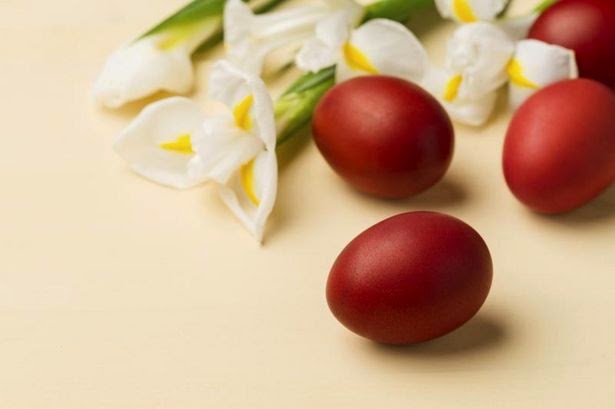 If you are looking for ways to keep "Christ" in your celebration of Easter, consider making anOrthodox Pascha Basketinstead of the typical egg & candy overload! Each of the following traditional foods has a symbolic and spiritual significance.
If you are looking for ways to keep "Christ" in your celebration of Easter, consider making anOrthodox Pascha Basketinstead of the typical egg & candy overload! Each of the following traditional foods has a symbolic and spiritual significance. We focus on saying "Pascha" which encompasses our spiritual journey to the Resurrection of Christ, and is our "passage" from the Hebrew "pesche, or passover from death to life."
Each year, the Church follows the same sequence of events - and one can't happen without the next. I encourage you not to skip right to the Resurrection without going thru the Cross. Living each component in correct Orthodox theology is truly "Orthobiosi"
...Christ raising Lazarus, Christ's Entry to Jerusalem (Palm Sunday), Christ's arrival to those anticipating Him (Bridegroom) the Passover (Christ's Mystical Last Supper on Holy Thursday and His washing of the disciples feet) His betrayal by Judas arrest and judgement, the Crucifixion, burial and tomb, all culminating at the glorious Resurrection of our Lord.
 Finally..........Our eggs are red for a reason! (click for info)
Finally..........Our eggs are red for a reason! (click for info)
FAMILY BASKET INGREDIENTS:
Many parishes will bless the baskets all together after the Divine Liturgy on Saturday morning. Ask your local priest to try this custom!
- a yeast bread,
- a bitter herb
- wine,
- cheese, meat, butter, salt, and a red egg.
- Sweet bread is always included, leavened with yeast. This is a symbol of the New Covenant; the Jews made unleavened bread, and we, the children of the new covenant, make leavened bread. Kulich is the traditional Russian bread, and Tsourekia is the traditional Greek braided bread. The braided form of this bread is a display of the Trinity - 3 in 1.
- The bitter herb, often horseradish or garlic, serves as a reminder of the first Passover (horseradish is eaten as a traditional part of the original Passover meal) and of the bitter sufferings which Christ endured for our sake. Sometimes the herb is colored red with beets, symbolizing the Blood of Christ. The bitter herb is also to bring to mind the Jews’ 40 years of wandering in the wilderness, or our 40 days of the fast.
- Wine, cheese, and butter are figurative of all the good things of life, and remind us of the earthly gifts that come from God. Meat is included in remembrance of the sacrifice of the Old Testament Passover, which has been replaced by Christ, the New Passover and Lamb of God. (slim jims, beef jerky, salami can be fun finger food)
- Salt serves as a reminder to us that we are “the salt of the earth.”
- The red egg, which we crack, is likened to the tomb from which Christ arose. This is because of the miracle of new life which comes from the egg, just as Christ miraculously came forth from the tomb, shattering the bonds of sin. Of course, red for His blood shed for us, and the miracle from St Maria Magdalane when the egg in her hand miraculously turned red as she proclaimed "Christ is Risen" to the non-believing Emperor.
Read here for information concerning how the Orthodox Christian tradition of Pascha baskets got started.http://www.iarelative.com/easter/bcover.htm